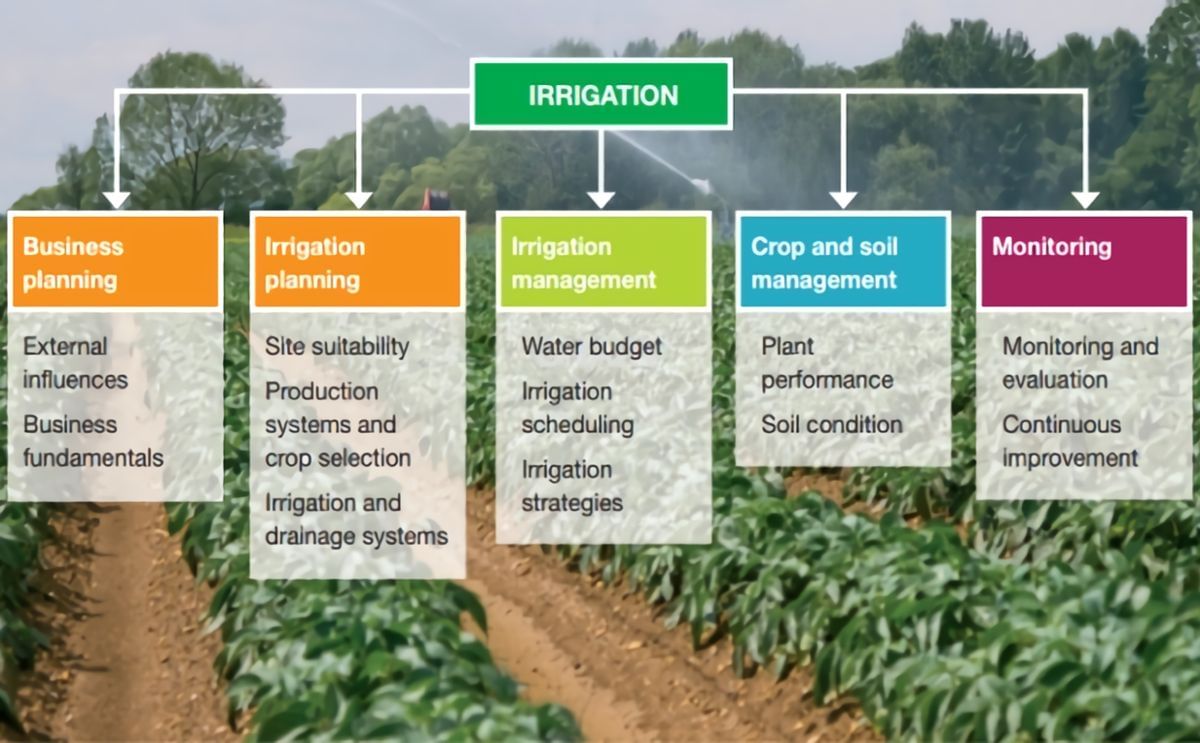Irrigation best practice guide for potatoes published
Irrigation Best Practice Guide for potatoes published

Potato Growers recognise the importance of water and how valuable a resource it is. However, as demand for water increases, it is increasingly necessary to justify need and provide evidence of efficient use, both for environmental protection and to meet crop protocol requirements.
Globally, water resources are subject to extreme pressure, with urban centres competing with growers for the increasingly scarce water supply, as river basins and aquifers dry up and the climate becomes more extreme. The demand for water is expected to double in the coming decades.
The importance of water not only to agriculture but to the country as a whole was demonstrated during the extremely dry conditions of early spring 2012. Water management has been on the political agenda for some time due to the deadlines set out in the EU Water Framework Directive which is drawing ever nearer.
Three Government policy reviews have already taken place and many of their recommendations appear in the Flood and Water Management Act 2010. These will also be taken forward in the recent Natural Environment White Paper and Water White Paper. Changes in water policy will almost certainly have a massive impact on UK agriculture and especially on those growing potatoes.
The management and efficient use of water is a high priority within the UK Potato industry and the actions of growers will have an impact on future resources, especially as Potato Council data suggests 55% of growers have irrigation equipment and 40% of the total potato crop is grown on land with short term tenancies.
However, by changing management practices and having a long term strategy for water use (with key principles in top graph as a guide) the recent problems of scarcity flooding and poor water quality could be alleviated.
This guide suggests ways of using water efficiently and helps irrigators deal with the challenges ahead. Better water management will enable growers to make the most of future opportunities and improve profits.
Top Tips Irrigation and Water use
- Water requirements need to be defined and based on local climate, soil type, soil structure, crop and intended market. Include water needed for crop quality, pest and disease control, damage minimisation, etc.
- Assess adequacy of supply, distribution and application equipment and identify areas for improvement
- Keep clear records of rainfall (and evapo-transpiration if possible), water usage, scheduling, operator training and equipment maintenance across all cropping areas (six years history minimum)
- Avoid windy conditions and excess evaporation by irrigating at night, which also ensures maximum penetration of the root zone
- Set up equipment to combat high winds or provide shelterbelts to prevent drift. The Woodland Trust has published a document on shelterbelts.
- Monitor operating pressures and water application uniformity during the growing season
- Check irrigation applications match the infiltration rate of the soil to avoid unnecessary erosion
- Carry a field book to record each irrigation ‘event’ as it happens. See paragraph 6.1 of the Best Practices Guide (Irrigation essentials – Environment Agency) for more information.










